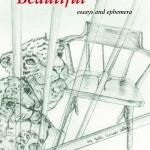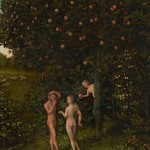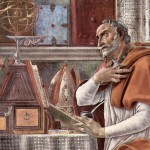
In my recent reflection on James Wellman’s book on Rob Bell, I tried to steer away from dismissing Bell altogether. I tried to be generous without being dishonest. I’m not sure if I did that, but I was left with an aloof sense that I didn’t really have my say. “Oh well, no need to always be so critical.” I moved on to my next book assignment: From Willow Creek to Sacred Heart. In it, I found nothing less than a complete take-down of the religious fads that Rob Bell and others have come to embody. Haw had done the work already. Amazing.
+++
I’ve read some very kind and gentle reviews of this book — including William T. Cavanaugh’s rather bland and uninspiring afterword — describing it as a compelling story that teaches us that “it’s all about the journey not the destination” and other cliche truisms, Catholic or otherwise. I even suspect that it was published and billed — and perhaps even written — as lighter, uplifting fare. One of those chicken soup, devotional sort of books.
Let me be clear: this book is an outright polemic. Aggressive. It is a devastating critique of cheap faddish religions, from Rob Bell and emergent churchiness to the quixotically unbiblical Biblical Evangelicals to New Atheists — and also to prudish Roman Catholics. No prisoners. That it comes cloaked in self disclosure only makes it all the more compelling, but no less convicting. Haw takes on all comers. And Haw wins.
At the center of Haw’s powerful polemic is the notion of a “Pagan Christianity,” nothing less than a Catholicism that takes Nietzsche seriously and at his word. Here we find a fearless vision of a Christianity embedded in more than just the easy secular life that Bell tries to defend as part of the sacred — here we find a cosmic Christ, a mythopoetic Gospel, a Christianity that can withstand and embrace all the force and absence of true mystery. Haw sees something very similar to Slavoj Zizek’s reading of Chesterton’s Orthodoxy in The Monstrosity of Christ (and, more recently, God is in Pain) where he notes that only Christianity has a God who, for a moment, on the Cross, appears to be an atheist.
Haw draws on Girard’s reading of Nietzsche, and a wider diet of Chesterton than Zizek, to remind us of the truth in Nietzsche’s much abused statement from The Gay Science, “God is dead and we have killed him!”
Haw writes:
We’ve all heard the Nietzsche’s famous phrase of the village madman, yelling in the streets, “God is dead!” But so much of the fashionable atheism, often parroting these words, has missed Nietzsche’s point. He is not saying that the world has “come of age,” or that the “God-out-there” is growing out of style, or that we are ready to move past a childish need for God into a secular world of demythologized modernism. No, Nietzsche knew what Chesterton knew: even atheists must choose their god. And he chose Dionysius, not Christ. Nietzsche saw something more grave and immense then the mere absence or death of god; he saw something that echoes of Christ’s crucifixion: “God is dead… and we have killed him!“
Haw goes on to square this sentiment more directly and obviously with the Gospel and his story. But the raw encounter with Nietzsche is powerful on its own. (It reminds me of my favorite book of philosophy, Ressentiment, by Max Scheler.)
The books sings when it tell us the punchline, when it reveals what Sacred Heart has that Willow Creek lacks: “Sacred Heart is simply breathing upon ceremonies that are globally available in the Catholic Church — and local parishes can choose to breathe upon them as well. It is Sacred Heart’s beautiful execution of this shared, rough, liturgical structure that drew me in at first.”
Liturgy. Art. A timely timelessness.
+++
A confession: I actually hate this book. I’d love to sinfully burn all the copies. It stole a book I am presently writing on the art of liturgy, rooted in testimony, defending a pagan Catholicism. It stole my thunder. After reading Haw I almost feel as though I have nothing more to say or add. But this needs to be repeated and that will be my mission now. Refocused.
Plus, Haw makes use of tradition with enough rigor to show us that there is really nothing new to this, and that’s important. Only our stories makes things seem new. Only times like these, times of disenchanting and disposable trends, times that produced Oprah, Rob Bell, and Richard Dawkins, only now could such an old, beat-up vehicle look so refreshingly new.
I don’t like apologetics. It usually feels like trivia in religious gotcha questions and answers. Not for me. This isn’t Jeopardy. But these rather silly and cheap forms of Catholic apologetics ignore the greatest apologist of the Church: St. Augustine, in his Confessions. Against that standard of apologetics, Haw wins. More than winning I think Haw provides a blueprint for something like the New (and much improved) Apologetics for our day. I’m taking notes.
Bell tells us that Love Wins; Haw shows it — show, don’t tell. Bell invents art and media; Haw lets art re-invent him and mediates that experience through telling us his story. Haw’s win won’t get him on the cover of Time magazine or his own congregation or lucrative work in LA.
And that’s the point.











